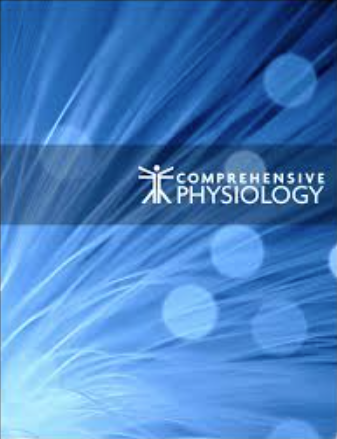下载PDF
{"title":"胆汁酸,肠道微生物群和脂肪肝的道路。","authors":"Phillip B Hylemon, Lianyong Su, Po-Cheng Zheng, Jasmohan S Bajaj, Huiping Zhou","doi":"10.1002/cphy.c210024","DOIUrl":null,"url":null,"abstract":"<p><p>This article describes the complex interactions occurring between diet, the gut microbiome, and bile acids in the etiology of fatty liver disease. Perhaps 25% of the world's population may have nonalcoholic fatty liver disease (NAFLD) and a significant percentage (∼20%) of these individuals will progress to nonalcoholic steatohepatitis (NASH). Currently, the only recommended treatment for NAFLD and NASH is a change in diet and exercise. A Western-type diet containing high fructose corn syrup, fats, and cholesterol creates gut dysbiosis, increases intestinal permeability and uptake of LPS causing low-grade chronic inflammation in the body. Fructose is a \"lipogenic\" sugar that induces long-chain fatty acid (LCFA) synthesis in the liver. Inflammation decreases the oxidation of LCFA, allowing fat accumulation in hepatocytes. Hepatic bile acid transporters are downregulated by inflammation slowing their enterohepatic circulation and allowing conjugated bile acids (CBA) to increase in the serum and liver of NASH patients. High levels of CBA in the liver are hypothesized to activate sphingosine-1-phosphate receptor 2 (S1PR2), activating pro-inflammatory and fibrosis pathways enhancing NASH progression. Because inflammation appears to be a major physiological driving force in NAFLD/NASH, new drugs and treatment protocols may require the use of anti-inflammatory compounds, such as berberine, in combination with bile acid receptor agonists or antagonists. Emerging new molecular technologies may provide guidance in unraveling the complex physiological pathways driving fatty liver disease and better approaches to prevention and treatment. © 2021 American Physiological Society. Compr Physiol 11:1-12, 2021.</p>","PeriodicalId":10573,"journal":{"name":"Comprehensive Physiology","volume":null,"pages":null},"PeriodicalIF":4.2000,"publicationDate":"2021-12-29","publicationTypes":"Journal Article","fieldsOfStudy":null,"isOpenAccess":false,"openAccessPdf":"https://www.ncbi.nlm.nih.gov/pmc/articles/PMC10197142/pdf/nihms-1852417.pdf","citationCount":"5","resultStr":"{\"title\":\"Bile Acids, Gut Microbiome and the Road to Fatty Liver Disease.\",\"authors\":\"Phillip B Hylemon, Lianyong Su, Po-Cheng Zheng, Jasmohan S Bajaj, Huiping Zhou\",\"doi\":\"10.1002/cphy.c210024\",\"DOIUrl\":null,\"url\":null,\"abstract\":\"<p><p>This article describes the complex interactions occurring between diet, the gut microbiome, and bile acids in the etiology of fatty liver disease. Perhaps 25% of the world's population may have nonalcoholic fatty liver disease (NAFLD) and a significant percentage (∼20%) of these individuals will progress to nonalcoholic steatohepatitis (NASH). Currently, the only recommended treatment for NAFLD and NASH is a change in diet and exercise. A Western-type diet containing high fructose corn syrup, fats, and cholesterol creates gut dysbiosis, increases intestinal permeability and uptake of LPS causing low-grade chronic inflammation in the body. Fructose is a \\\"lipogenic\\\" sugar that induces long-chain fatty acid (LCFA) synthesis in the liver. Inflammation decreases the oxidation of LCFA, allowing fat accumulation in hepatocytes. Hepatic bile acid transporters are downregulated by inflammation slowing their enterohepatic circulation and allowing conjugated bile acids (CBA) to increase in the serum and liver of NASH patients. High levels of CBA in the liver are hypothesized to activate sphingosine-1-phosphate receptor 2 (S1PR2), activating pro-inflammatory and fibrosis pathways enhancing NASH progression. Because inflammation appears to be a major physiological driving force in NAFLD/NASH, new drugs and treatment protocols may require the use of anti-inflammatory compounds, such as berberine, in combination with bile acid receptor agonists or antagonists. Emerging new molecular technologies may provide guidance in unraveling the complex physiological pathways driving fatty liver disease and better approaches to prevention and treatment. © 2021 American Physiological Society. Compr Physiol 11:1-12, 2021.</p>\",\"PeriodicalId\":10573,\"journal\":{\"name\":\"Comprehensive Physiology\",\"volume\":null,\"pages\":null},\"PeriodicalIF\":4.2000,\"publicationDate\":\"2021-12-29\",\"publicationTypes\":\"Journal Article\",\"fieldsOfStudy\":null,\"isOpenAccess\":false,\"openAccessPdf\":\"https://www.ncbi.nlm.nih.gov/pmc/articles/PMC10197142/pdf/nihms-1852417.pdf\",\"citationCount\":\"5\",\"resultStr\":null,\"platform\":\"Semanticscholar\",\"paperid\":null,\"PeriodicalName\":\"Comprehensive Physiology\",\"FirstCategoryId\":\"3\",\"ListUrlMain\":\"https://doi.org/10.1002/cphy.c210024\",\"RegionNum\":2,\"RegionCategory\":\"医学\",\"ArticlePicture\":[],\"TitleCN\":null,\"AbstractTextCN\":null,\"PMCID\":null,\"EPubDate\":\"\",\"PubModel\":\"\",\"JCR\":\"Q1\",\"JCRName\":\"PHYSIOLOGY\",\"Score\":null,\"Total\":0}","platform":"Semanticscholar","paperid":null,"PeriodicalName":"Comprehensive Physiology","FirstCategoryId":"3","ListUrlMain":"https://doi.org/10.1002/cphy.c210024","RegionNum":2,"RegionCategory":"医学","ArticlePicture":[],"TitleCN":null,"AbstractTextCN":null,"PMCID":null,"EPubDate":"","PubModel":"","JCR":"Q1","JCRName":"PHYSIOLOGY","Score":null,"Total":0}
引用次数: 5
引用
批量引用



